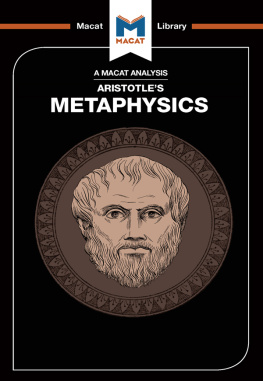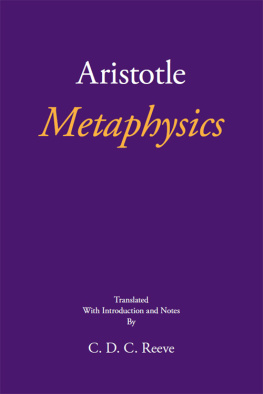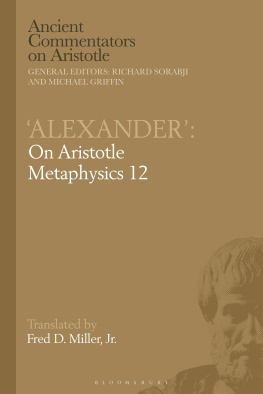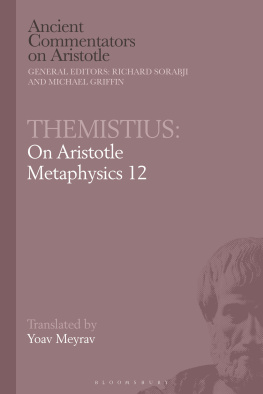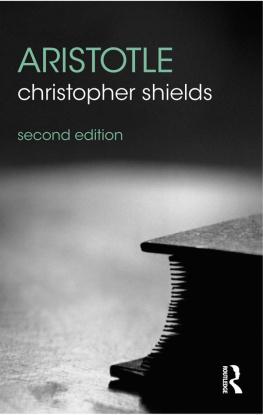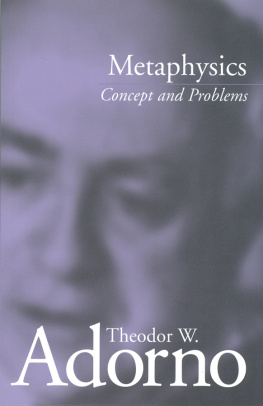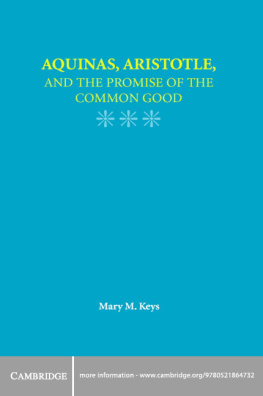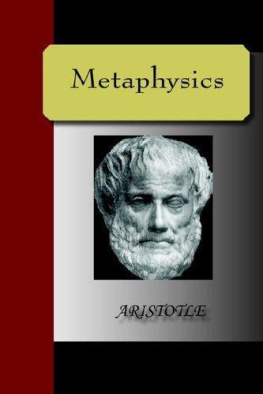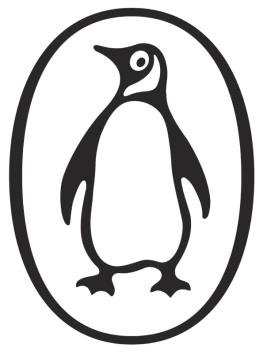Aiste Celkyte - An Analysis of Aristotle’s Metaphysics
Here you can read online Aiste Celkyte - An Analysis of Aristotle’s Metaphysics full text of the book (entire story) in english for free. Download pdf and epub, get meaning, cover and reviews about this ebook. year: 2017, publisher: MACAT LIBRARY INTL, genre: Science. Description of the work, (preface) as well as reviews are available. Best literature library LitArk.com created for fans of good reading and offers a wide selection of genres:
Romance novel
Science fiction
Adventure
Detective
Science
History
Home and family
Prose
Art
Politics
Computer
Non-fiction
Religion
Business
Children
Humor
Choose a favorite category and find really read worthwhile books. Enjoy immersion in the world of imagination, feel the emotions of the characters or learn something new for yourself, make an fascinating discovery.
- Book:An Analysis of Aristotle’s Metaphysics
- Author:
- Publisher:MACAT LIBRARY INTL
- Genre:
- Year:2017
- Rating:3 / 5
- Favourites:Add to favourites
- Your mark:
- 60
- 1
- 2
- 3
- 4
- 5
An Analysis of Aristotle’s Metaphysics: summary, description and annotation
We offer to read an annotation, description, summary or preface (depends on what the author of the book "An Analysis of Aristotle’s Metaphysics" wrote himself). If you haven't found the necessary information about the book — write in the comments, we will try to find it.
An Analysis of Aristotle’s Metaphysics — read online for free the complete book (whole text) full work
Below is the text of the book, divided by pages. System saving the place of the last page read, allows you to conveniently read the book "An Analysis of Aristotle’s Metaphysics" online for free, without having to search again every time where you left off. Put a bookmark, and you can go to the page where you finished reading at any time.
Font size:
Interval:
Bookmark:


Aristotles
____________________
Metaphysics
Aiste Celkyte

Copyright 2017 by Macat International Ltd
24:13 Coda Centre, 189 Munster Road, London SW6 6AW.
Macat International has asserted its right under the Copyright, Designs and Patents Act 1988 to be identified as the copyright holder of this work.
The print publication is protected by copyright. Prior to any prohibited reproduction, storage in a retrieval system, distribution or transmission in any form or by any means, electronic, mechanical, recording or otherwise, permission should be obtained from the publisher or where applicable a license permitting restricted copying in the United Kingdom should be obtained from the Copyright Licensing Agency Ltd, Barnards Inn, 86 Fetter Lane, London EC4A 1EN, UK.
The ePublication is protected by copyright and must not be copied, reproduced, transferred, distributed, leased, licensed or publicly performed or used in any way except as specifically permitted in writing by the publishers, as allowed under the terms and conditions under which it was purchased, or as strictly permitted by applicable copyright law. Any unauthorised distribution or use of this text may be a direct infringement of the authors and the publishers rights and those responsible may be liable in law accordingly.
www.macat.com
info@macat.com
Cover illustration: Capucine Deslouis
Cataloguing in Publication Data
A catalogue record for this book is available from the British Library.
Library of Congress Cataloguing-in-Publication Data is available upon request.
ISBN 978-1-912302-95-6 (hardback)
ISBN 978-1-912127-21-4 (paperback)
ISBN 978-1-912281-83-1 (e-book)
Notice
The information in this book is designed to orientate readers of the work under analysis, to elucidate and contextualise its key ideas and themes, and to aid in the development of critical thinking skills. It is not meant to be used, nor should it be used, as a substitute for original thinking or in place of original writing or research. References and notes are provided for informational purposes and their presence does not constitute endorsement of the information or opinions therein. This book is presented solely for educational purposes. It is sold on the understanding that the publisher is not engaged to provide any scholarly advice. The publisher has made every effort to ensure that this book is accurate and up-to-date, but makes no warranties or representations with regard to the completeness or reliability of the information it contains. The information and the opinions provided herein are not guaranteed or warranted to produce particular results and may not be suitable for students of every ability. The publisher shall not be liable for any loss, damage or disruption arising from any errors or omissions, or from the use of this book, including, but not limited to, special, incidental, consequential or other damages caused, or alleged to have been caused, directly or indirectly, by the information contained within.
THE MACAT LIBRARY
The Macat Library is a series of unique academic explorations ofseminal works in the humanities and social sciences books andpapers that have had a significant and widely recognised impact ontheir disciplines. It has been created to serve as much more than just asummary of what lies between the covers of a great book. It illuminatesand explores the influences on, ideas of, and impact of that book. Ourgoal is to offer a learning resource that encourages critical thinking andfosters a better, deeper understanding of important ideas.
Each publication is divided into three Sections: Influences, Ideas, andImpact. Each Section has four Modules. These explore every importantfacet of the work, and the responses to it.
This Section-Module structure makes a Macat Library book easy touse, but it has another important feature. Because each Macat book iswritten to the same format, it is possible (and encouraged!) to crossreferencemultiple Macat books along the same lines of inquiry orresearch. This allows the reader to open up interesting interdisciplinarypathways.
To further aid your reading, lists of glossary terms and peoplementioned are included at the end of this book (these are indicated byan asterisk [*] throughout) as well as a list of works cited.
Macat has worked with the University of Cambridge to identify theelements of critical thinking and understand the ways in which sixdifferent skills combine to enable effective thinking.Three allow us to fully understand a problem; three more give usthe tools to solve it. Together, these six skills make up the
PACIER model of critical thinking. They are:
ANALYSIS understanding how an argument is built
EVALUATION exploring the strengths and weaknesses of an argument
INTERPRETATION understanding issues of meaning
CREATIVE THINKING coming up with new ideas and fresh connections
PROBLEM-SOLVING producing strong solutions
REASONING creating strong arguments
To find out more, visit WWW.MACAT.COM.
Primary critical thinking skill: REASONING
Secondary critical thinking skill: ANALYSIS, INTERPRETATION,EVALUATION
Aristotles Metaphysics is a collection of essays on a wide range of topics, almostcertainly never put together by Aristotle himself. This helps to explain why thematerial covers such a very wide range of material, from meaning tomathematics, from logical sequences to religion. It includes very usefultreatments of the nature of axioms (or primary truths) such as the law ofnon-contradiction and the laws of logic.
In looking at these, Aristotle provides sustained guides to clear thinking aswould be evidenced in analysis and evaluation of arguments and theproduction of good reasoning. He also provides some valuable discussion ofinterpretation by looking at homonyms (as in this knife is sharp and this noteis sharp) and what he calls paronyms, which lie between homonyms andsynonyms: an example is the word healthy. Metaphysics is also useful to studyfor its frequent examples of hypothetical reasoning, including their use inmathematics (if x, then y) and science (if a moves b, then b moves c..., sowhat moves a?). In addition, we find Aristotle analysing Platos arguments andsubjecting them to sustained (critical) evaluation. While Metaphysics showsAristotle in many well-developed critical thinking modes, it is first andforemost a work of exquisite reasoning, creating strong arguments thatcontinue to be debated and deployed today, nearly 2500 years after they werewritten.
Aristotle was born in 384 BCE in what is present-day Macedonia. At theage of 17, he moved to Athens in Greece to begin an education inphilosophy under Plato, one of the founders of European philosophy, at hisrenowned Academy. On Platos death in 347 BCE, Aristotle moved backto Macedonia to tutor the young Alexander the Great. But in 335 BCE hereturned to Athens and established his own school, the Lyceum. Politicalunrest forced Aristotle to leave Athens again in 322 BCE, and he diedshortly afterwards on the island of Euboea.
Dr Aiste Celkyte is a researcher specialising in ancient philosophy. She iscurrently a postdoctoral researcher at Yonsei University in South Korea.
Next pageFont size:
Interval:
Bookmark:
Similar books «An Analysis of Aristotle’s Metaphysics»
Look at similar books to An Analysis of Aristotle’s Metaphysics. We have selected literature similar in name and meaning in the hope of providing readers with more options to find new, interesting, not yet read works.
Discussion, reviews of the book An Analysis of Aristotle’s Metaphysics and just readers' own opinions. Leave your comments, write what you think about the work, its meaning or the main characters. Specify what exactly you liked and what you didn't like, and why you think so.

